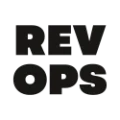Should you use a SaaS purchasing platform to aid your procurement?
Thinking about implementing a SaaS purchasing platform into your procurement process?
RevOps teams often do this to organise various contracts. Management does it to save having to do it themselves if they don't already have someone dedicated to this.
Understanding SaaS Purchasing Platforms
A SaaS (Software as a Service) purchasing platform is a cloud-based software solution that helps organisations (typically aimed at scaleups) streamline and automate their procurement processes. It allows businesses to manage and control their purchasing activities in a centralised and more efficient manner. (no more Google Drive folders with missing docs)!
These platforms typically provide a user-friendly interface, allowing users to easily navigate the procurement process, from creating purchase requisitions to approving and tracking orders. They also offer features such as supplier management, contract management, and spend analysis, which can help businesses make informed purchasing decisions.
Some of the more sophisticated tools also extract important parts of a contract and push that info to you in an easy
By implementing a SaaS purchasing platform, businesses can improve their procurement efficiency, reduce costs, and enhance overall productivity. It provides a scalable and flexible solution that can adapt to the changing needs of the business better than manually built folders for document saving.
Advantages of Using a SaaS Purchasing Platform
There are several advantages to using a SaaS purchasing platform:
1. Cost savings: By automating the procurement process, businesses can reduce manual errors, eliminate digital paper-based processes, and negotiate better deals with suppliers. This can result in significant cost savings.
2. Improved efficiency: With a SaaS purchasing platform, businesses can streamline their procurement processes, reduce buyer cycle times, and improve overall efficiency. This allows employees to focus on more strategic tasks and helps the business operate more smoothly, rather than documenting lots of contract documents for each tool that they purchase across their organisation.
3. Enhanced visibility: Often, these platforms provide real-time data and analytics, allowing businesses to gain insights into their procurement activities. This visibility enables better decision-making and helps startups identify areas for improvement - especially around cost.
4. Centralised control: A SaaS purchasing platform allows businesses to have centralised control over their procurement activities. This ensures consistency and compliance with procurement policies and procedures. The biggest pain startups and scaleups have is having lots of different teams and functions buying lots of different tools on different payment methods.
5. Scalability and flexibility: SaaS purchasing platforms are designed to be scalable and flexible, allowing businesses to easily adapt to changing business needs. They can handle increased transaction volumes and accommodate growth without the need for significant infrastructure investments.
Overall, using a SaaS purchasing platform can help businesses streamline their procurement processes, reduce costs, improve efficiency, and enhance overall productivity.
Key Features to Look for in a SaaS Purchasing Platform
When selecting a SaaS purchasing platform, we typically consider the following features:
1. Ease of use: The platform should have a user-friendly interface that is easy to navigate and understand. This will ensure that employees can quickly adopt and use the platform without extensive training.
2. Integration capabilities: The platform should integrate seamlessly with other existing systems such as your CRM, accounting software, and supplier databases. This will allow for smooth data flow and eliminate the need for manual data entry. Bonus points for an API that can be called.
3. Customisability: The platform should offer the ability to customise workflows, approval processes, and reporting functionalities to align with the specific needs of the business. This will ensure that the platform can adapt to the unique requirements of the organisation. The exact needs will vary from organisation to organisation, so make sure to ask lots of questions on the demos about how you can customise access rights and so on.
4. Supplier management: The platform should include robust supplier management features such as supplier onboarding, performance tracking, and contract management. This will help businesses maintain strong relationships with their suppliers and ensure compliance with contractual agreements.
5. Analytics and reporting: The platform should provide comprehensive analytics and reporting capabilities, allowing businesses to gain insights into their procurement activities. This will enable data-driven decision-making and help identify areas for improvement.
Making sure you've considered the key features means startups can select a SaaS purchasing platform that best meets their needs and requirements.
Why not to buy a SaaS Purchasing Platform
While there are many advantages to using a SaaS purchasing platform, there are a few reasons why a business might choose not to buy one:
1. Cost: Implementing a SaaS purchasing platform can involve upfront costs, including subscription fees, implementation costs, and training expenses. For some businesses, these costs may outweigh the benefits of using the platform. This does not include the total cost of ownership of having another tool (albeit there is a cost of managing all tooling separately which could be higher).
2. Complexity: Depending on the size and complexity of the business, implementing a SaaS purchasing platform can be a complex process. It may require significant time and resources to configure the platform, integrate it with existing systems, and train employees. The upfront cost may not yet be worth it.
3. Security concerns: Some businesses may have concerns about the security of their data when using a cloud-based platform. It is important to carefully evaluate the security measures and data protection policies of the SaaS provider before making a decision. Ask questions about their security certifications and their data protection policies.
4. Limited customisation: While SaaS purchasing platforms offer some level of customisation, they may not fully align with the unique requirements of every business. Some businesses may prefer to develop a custom solution that is tailored specifically to their needs. This is the same with any tool, however.
It is important for businesses to carefully evaluate their specific needs, budgets, and resources before deciding whether or not to invest in a SaaS purchasing platform.
Implementation Considerations for a SaaS Purchasing Platform
When implementing a SaaS purchasing platform, the key things to think about are:
1. Planning and preparation: Before implementing the platform, it is important to thoroughly assess the current procurement processes and identify areas that need improvement. This will help define the goals and objectives of implementing the platform.
2. Data migration: If the business is transitioning from an existing procurement system, it is important to plan for data migration. This involves transferring data from the old system to the new platform, ensuring data integrity and accuracy (or a dreaded spreadsheet!).
3. Employee training: To ensure a successful adoption of the platform, employees should be provided with comprehensive training. This will help them understand how to use the platform effectively and maximize its benefits.
4. Change management: Implementing a new system can be a significant change for employees. It is important to have a change management plan in place to address any resistance or challenges that may arise during the implementation process. Video guides, live training or 1-2-1 sessions will be crucial for ensuring adoption
5. Continuous improvement: Once the platform is implemented, businesses should continuously monitor and evaluate its performance. This will help identify areas for improvement and ensure that the platform continues to meet the evolving needs of the business.
By considering these implementation considerations, businesses can ensure a smooth and successful implementation of a SaaS purchasing platform.






